A few months ago, an iceboat followed me home. At 75 lbs, it’s too heavy to carry, so to get it from the roof rack or trailer to the ice, I needed to make a cart. Iceboaters typically make light, sturdy carts with wheels big enough to take the hard pushing and pulling required to get over the high icy ridges that form on the shore. I thought I could also use the cart to roll my sea kayak down a root-rutted trail to my usual launch.
I started with shopping for wheels. Inflatable tires don’t perform well when it is very cold, so I bought two 14″ plastic wheels, each rated at 50 lbs, with solid tires and roller bearings that would fit a 1/2″ axle. I had some steel tubing that I could use for an axle. It would go under a wood plank, a 24″ by 3 1/2″ piece of 4/4 ash that I had on hand. The cart could be made wider to take larger boats as long as the weight on the wheels is within their load rating.
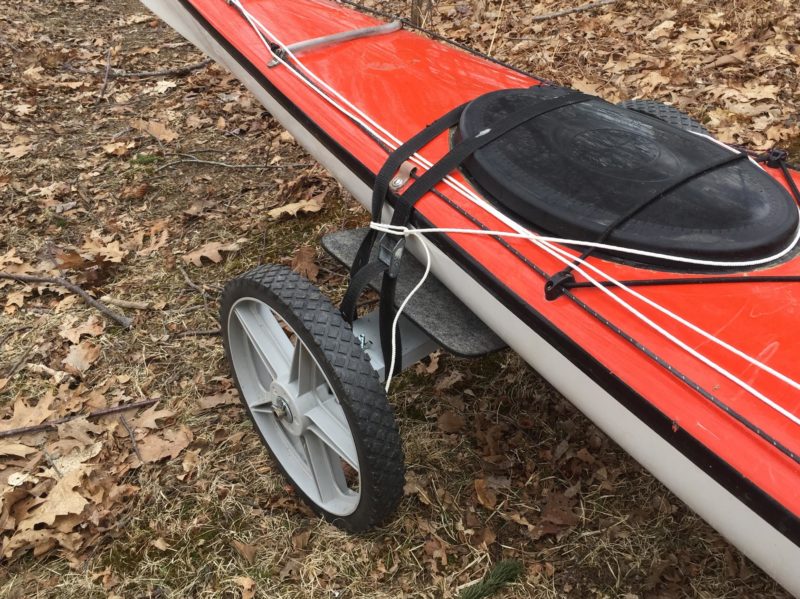 Photographs by the author
Photographs by the authorThe first arrangement for carrying kayaks used commercial roof-rack cradles. Disassembled, all of the cart parts fit through the kayak hatch seen here.
I used pad-eyes to fasten the axle to the wood—they would be stronger than the other option, eye straps. The pad-eyes were through-bolted to the plank, as I was concerned that wood screws could work loose. I needed spacers on the axle to bear against the pad-eyes and keep the axle centered. I tried using 1/2″ PVC pipe, which was slightly too tight, but 1/2″ copper pipe was just right.
An allowance is needed for washers on the inboard side, between the wheel and the tubing spacers, and on the outboard side, where easily removable spring clips hold the wheels on.
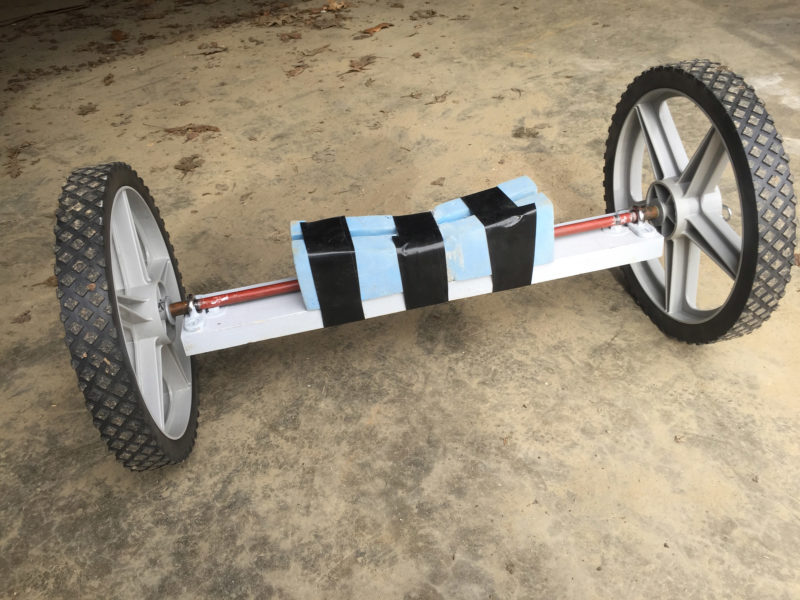
With a foam saddle for a kayak taped to the axle side of the wooden beam, the weight of the wood assures the saddle is always facing up, ready for the kayak.
To accommodate the kayak, I first bolted on a cradle that is part of my roof-rack system. These are a little expensive and I often need mine on the roof rack, so I replaced it with foam V block, taped in place. The cart is easy to take apart, and all of the pieces even fit through the large oval hatch in the stern of my kayak. Padding slipped over the axle ends keeps them from doing any damage.
I use a webbing strap to hold the kayak on the cart. That works fine on its own for pushing the cart; for pulling, an additional light piece of line hooked over the rear hatch coaming keeps the cart from slipping off.
The rigid wheels may not be as good in soft sand as some of the wide inflatable wheels, but their 14” diameter makes it easy to run over the rough terrain I built it for. For about $50, I had a cart that is the equal of any of the expensive commercial ones and much sturdier than the various do-it-yourself PVC-pipe ones I’ve seen.![]()
Ben Fuller, curator of the Penobscot Marine Museum in Searsport, Maine, has been messing about in small boats for a very long time. He is owned by a dozen or more boats ranging from an International Canoe to a faering.
Editor’s notes
For quite some time, I’ve needed a good cart for my canoe. The first one I made had small wheels that couldn’t manage sand. The second one had a large frame with bicycle wheels and wouldn’t fit in the canoe. The third used a boat fender as a roller and worked great until the pressure of the axle tore a hole in it. When I saw Ben’s cart, I gave it a try and it has worked well.

I made a general-purpose cradle for my cart. The carpet pads are just wrapped around the cradle board and can easily be removed. With the axle located underneath the wooden deck and cradle, the cart needs a kickstand to keep the cradle upright.
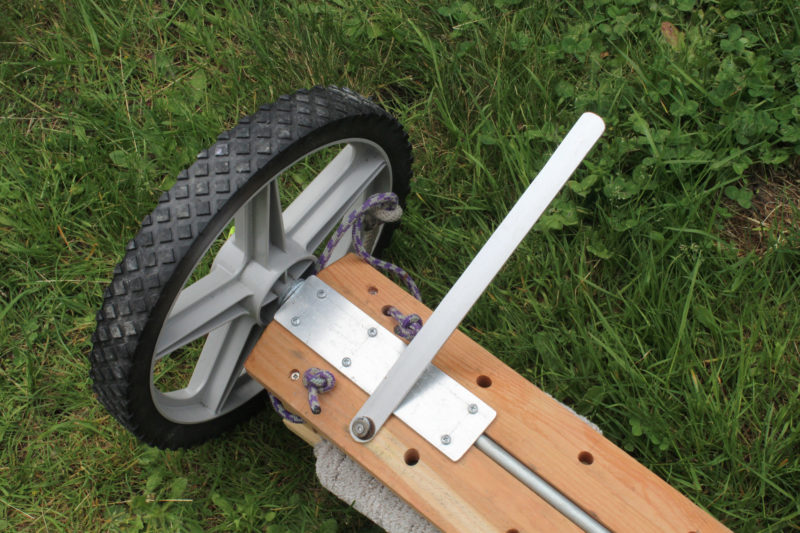
The kickstand is a flat piece of 1/8″ aluminum secured by a screw to the beveled underside of the crossbeam.
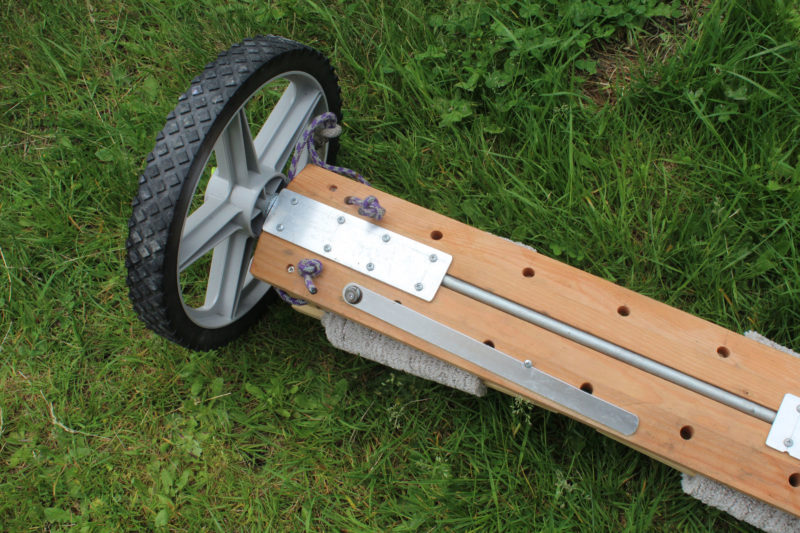
The kickstand pivots out of the way and a partially driven screw serves as a stop in case the pivot screw doesn’t provide enough friction.
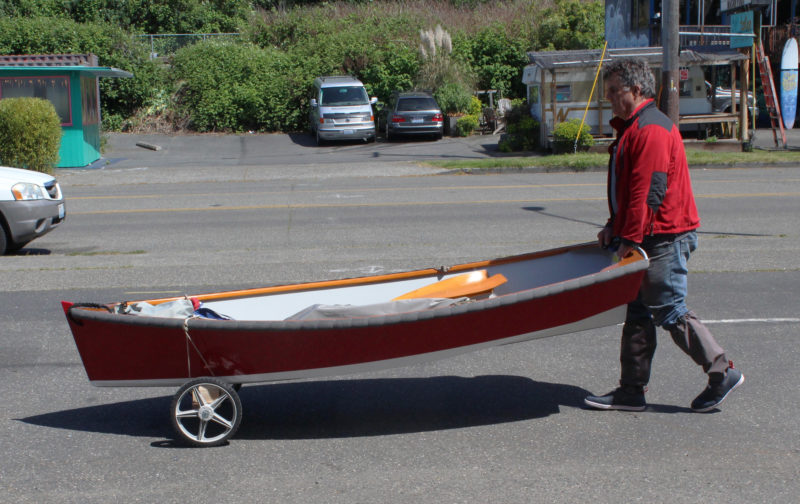
While the cart is wide enough to be placed in the middle of a kayak and take all of its weight, it could fit only the bow of this skiff (the Bella 10 reviewed in this issue) and take about half of the load.
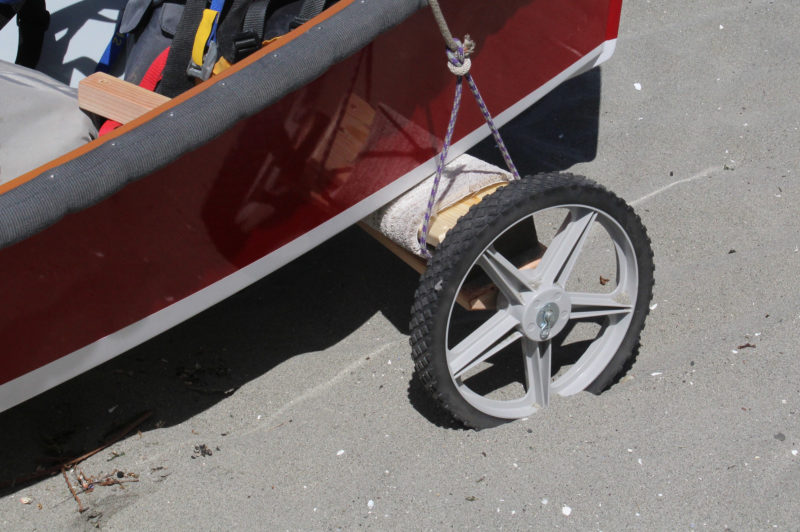
The 14″ wheels don’t get entirely bogged down by dry sand, but they do get slowed down.
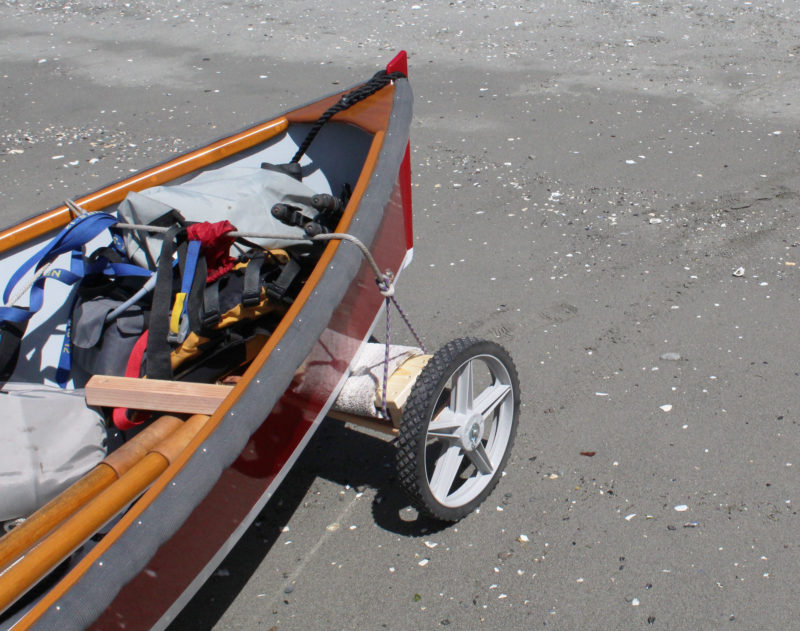
On damp hard sand, the wheels roll as easily as on pavement.
You can share your tips and tricks of the trade with other Small Boats Magazine readers by sending us an email.
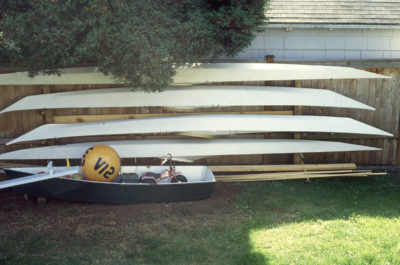

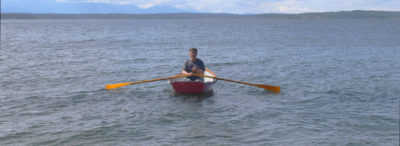

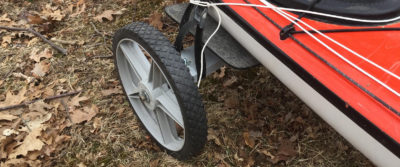
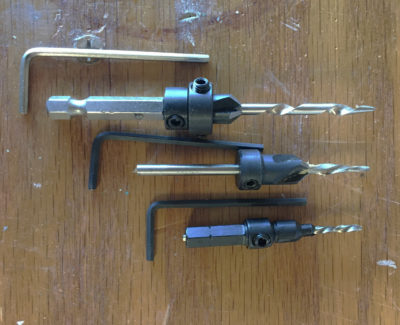

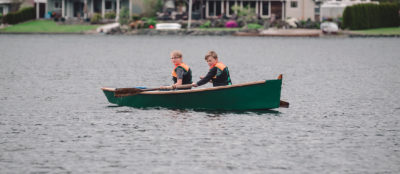
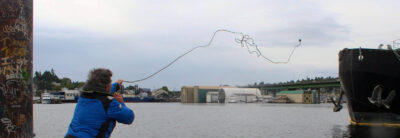
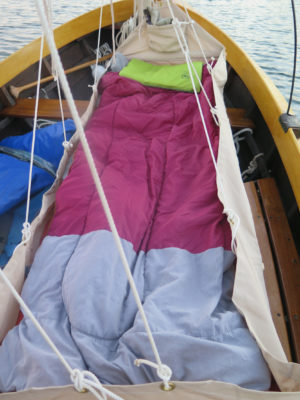
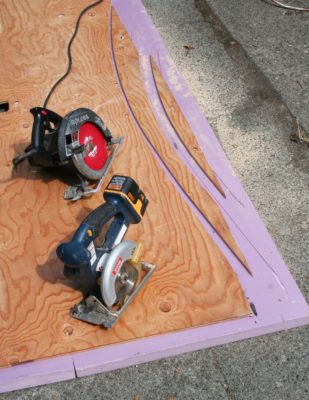

The wheels in your photo seem to look like they will do the job, The wheels that the link is directing toward (at Lowes) are not the same. I bought and used the ones from Lowes a few years ago for exactly this kind of cart. My 100 lb. boat sorta lives on the cart. The wheels failed, first getting flat spots, then totally falling in a turn with side pressure. Unless you treat them more carefully than I, don’t use those.
my .02 worth,
G. Holland
Thanks for the note, Glenn. I kept the packaging label that came with the wheels I bought. The wheels you see on my cart are the Arnold 14″ plastic wheels, model 1475-P. Ben and I both got our wheels at Lowes. The link in the article goes to Lowes’ listing with the right model number, but the wrong photo. It may be an image of an earlier version. The image of the wheel on Home Depot site matches the wheels on our carts. Amazon and even Arnold’s own web site show what appears to be the old version. If you had the older version of the wheels, Glenn, I’d agree that they don’t seem as strong as the newer version Ben and I used.
For better “flotation” in dry sand, 2 wheels on each side would have the drawback of more cost and weight. It might be worth it if you have to traverse much sand.